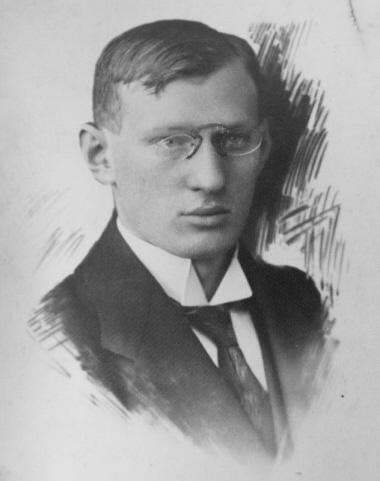Full name Gyula Breyer Country Hungary | Name Gyula Breyer Role Chess Player | |
 | ||
Born 30 April 1893Budapest, Hungary ( 1893-04-30 ) Died November 9, 1921, Bratislava, Slovakia | ||
Emanuel lasker vs gyula breyer budapest 1911
Gyula ("Julius") Breyer (30 April 1893 Budapest – 9 November 1921) was a Hungarian chess player and 1912 Hungarian national champion.
Contents
Chess career
In 1912 Breyer won the Hungarian championship in Temesvar. In a 1920 tournament in Berlin he finished first (+6 −2 =1) ahead of Bogoljubov, Tartakower, Réti, Maróczy, and Tarrasch. Breyer had a plus record against Max Euwe (later world champion).
In 1921 Breyer set a new blindfold chess record by playing 25 games simultaneously. He also edited Szellemi Sport, a magazine devoted to chess puzzles, and composed at least one brilliant retrograde analysis study.
Heart disease cut short Breyer's promising chess career. He died in 1921 at the age of 28 in Bratislava. He was buried in Bratislava and after exhumation in 1987, was reburied in the Kerepesi Cemetery in Budapest.
Legacy
Breyer was a leading pioneer of the hypermodern school of chess theory, which favoured controlling the centre with pressure from the flanks. He is noted for the maxim "after the first move 1.e4 White's game is in the last throes", although Breyer himself did not abandon that move. He was a friend of Richard Réti and an inspiration to other players.
He is most notably recognised for the Breyer Variation in the Ruy Lopez, which involves Black re-routing his queen's knight to d7 for increased flexibility (1.e4 e5 2.Nf3 Nc6 3.Bb5 a6 4.Ba4 Nf6 5.0-0 Be7 6.Re1 b5 7.Bb3 0-0 8.c3 d6 9.h3 Nb8 10.d4 Nbd7; see diagram). This line became fashionable in the 1960s, and a favourite of ex-world champion Boris Spassky. He is also recognised for the Breyer Variation of the Vienna Gambit (1.e4 e5 2.Nc3 Nf6 3.f4 d5 4.fxe5 Nxe4 5.Nf3 Be7), as well as the Breyer Gambit (1.e4 e5 2.f4 exf4 3.Qf3), a variation of the King's Gambit. He was an early adopter of the Slav Defense (1.d4 d5 2.c4 c6) at a time when the Queen's Gambit Declined (2...e6) was Black's most common response to the Queen's Gambit, and is credited with the Breyer Variation of the Slav (1.d4 d5 2.c4 c6 3.Nf3 Nf6 4.Nbd2).
Sample game
Euwe–Breyer, Vienna 1921
1.e4 Nc6 2.Nc3 Nf6 3.d4 e5 4.dxe5 Nxe5 5.f4 Nc6 6.e5 Ng8 7.Bc4 d6 8.Nf3 Bg4 9.0-0 Qd7 10.Qe1 0-0-0 11.Ng5 dxe5 12.Kh1 f6 13.Nf7 Na5 14.Nxd8 Nxc4 15.Qe4 Nd6 16.Qb4 Be7 17.fxe5 fxe5 18.Nxb7 Nxb7 19.Rf8+ Bxf8 20.Qxf8+ Qd8 21.Qxg7 Nf6 22.Bg5 Rg8 23.Qh6 Rg6 24.Qh4 Nd6 25.Rf1 Nf5 26.Qxg4 Nxg4 27.Bxd8 Nge3 28.Rf3 Kxd8 29.h3 Rg3 30.Rxg3 Nxg3+ 0–1
Breyer-Esser, Boedapest 1917 annotation by Hans Ree
1.d2-d4 d7-d5 2.c2-c4 c7-c6 3.e2-e3 Pg8-f6 4.Pb1-c3 e7-e6 5.Lf1-d3 Lf8-d6 6.f2-f4 0-0 7.Pg1-f3 d5xc4 8.Ld3-b1 b7-b5 9.e3-e4 Ld6-e7 10.Pf3-g5 h7-h6 11.h2-h4 g7-g6 12.e4-e5 h6xg5 13.h4xg5 Pf6-d5 14.Ke1-f1 ,, With this king's set, he designs as a yogi earthly dimension and exceeds the boundaries of the logically follower, "writes Breyer's biographer Iván Bottlik. The direct way was 14.Dg4 Kg7 15.Th7 + Kxh7 16.Dh5 + Kg7 17.Dh6 + Kg8 18.Lxg6 fxg6 19.Dxg6 + Kh8 20.Dh6 + Kg8 with only remise because after 21.g6 black has the saving (and winning) move 21 ... Lh4 +. 14 ... Pd5xc3 15.b2xc3 Lc8-b7 Now Breyers's idea works. Better was 15 ... Pd7 after which white has perpetual check, or 15 ... De8 after which white must play slowly on the attack with very unclear chances of success. 16.Dd1-g4 Now black has no defense anymore. 16 ... Kg8-g7 17.Th1-h7 + Kg7xh7 18.Dg4-h5 + Kh7 -g8 19.Lb1xg6 f7xg6 20.Dh5xg6 + Kg8-h8 21.Dg6-h6 + Kh8 -g8 22.g5 -g6 Tf8 -f7 23.g6xf7 + Kg8xf7 24.Dh6-h5 + Kf7 -g7 25.f4 -f5 e6xf5 26.Lc1-h6 + The fastest gain was 27.e6 26 ... Kg7-h7 27.Lh6-g5 + Kh7 -g8 28.Dh5 -g6 + Kg8-h8 According to most sources, black resigned here because of 29.Lf6 + Lxf6 30.exf6 Dg8 31.Dh5 + Dh7 32.De8 + Dg8 33.f7. In fact, Breyer almost went wrong in time trouble. Esser could even win later, but finally Breyer won in 47 moves.
